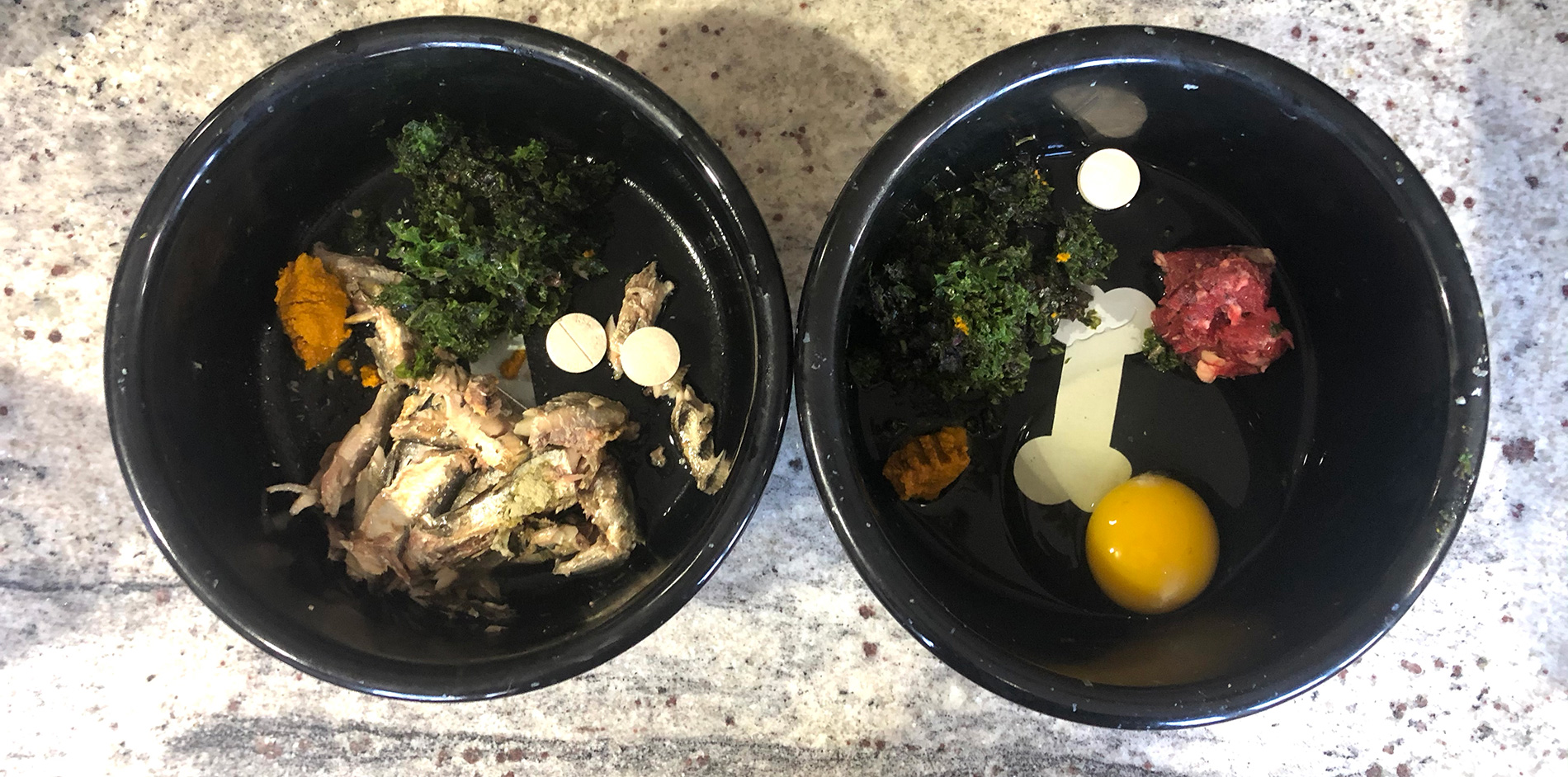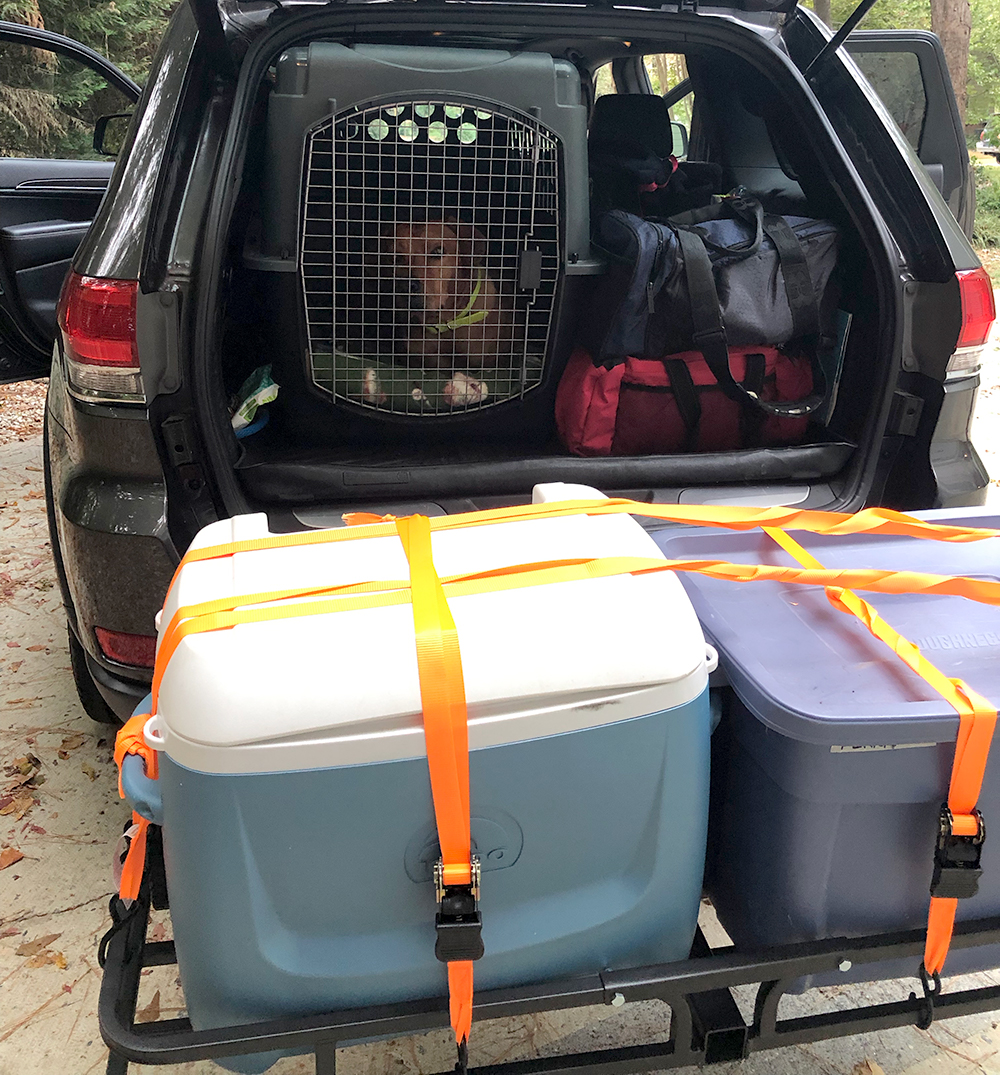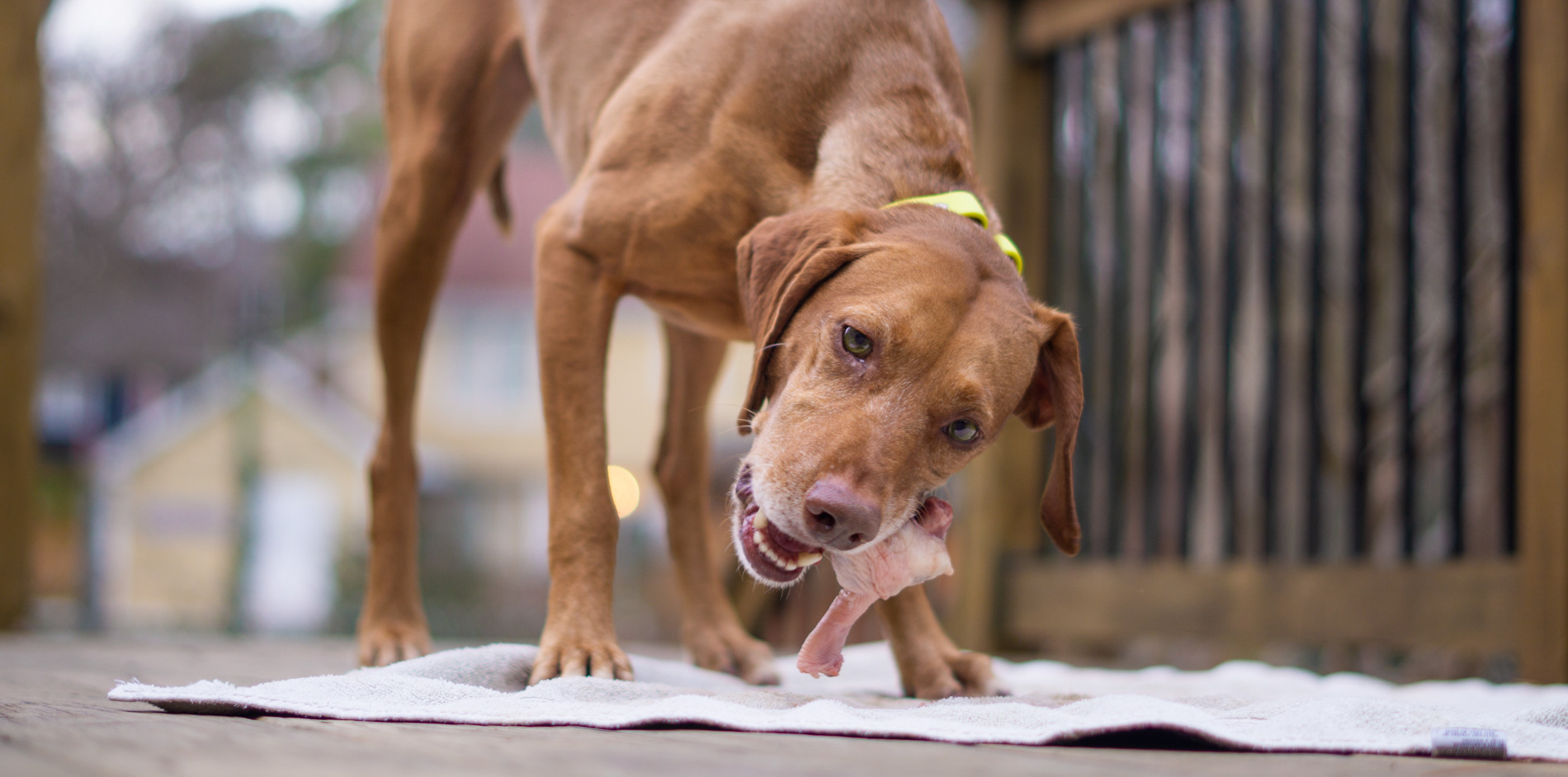A few months ago, I wrote a post about the benefits of feeding a raw diet to your dog. For me, the benefits outweigh the downsides, but it’s true that there are challenges to feeding a raw diet. I will cover what I see as the challenges in this post, from most to least significant.
Prep Time
On a weekly or monthly basis, the amount of time it takes to prep raw meals for my dogs is probably the biggest downside. Granted, I don’t spend an excessive amount of time doing it. On average, it takes me one hour to prep one week of meals for both dogs. I try to prep every two weeks, so I’m usually doing a two-hour prep every other Sunday. I tend to leave it to Sunday evening, and sometimes it’s the last thing I’d like to be doing after a long weekend. But in the grand scheme of things, I know this time is worth it in order for my dogs to have a healthy diet. I know some people prep a full month or more at a time and that decreases the frequency you have to do it. At this point, I don’t have the freezer space or enough containers to do more than two weeks at a time.
Cost
Cost is probably the main reason why people who are interested don’t feed raw. In my blog post about how much it costs to feed raw, I break down the recurring and one-time costs. While I find that a raw diet is more expensive than feeding kibble, some people pointed out after my that post that feeding raw may save you vet costs in the future. That is a valid point, yet something that is hard to quantify.
Finding Ingredients
Locating ingredients can be challenging and is dependent on many things. Before you start feeding a DIY raw diet, I would do some research and make sure you can source enough variety in order to feed a balanced diet. Some places have it easier than others, depending on proximity to farms, ethnic grocery stores, etc. I most often have issues locating the “other” secreting organ (kidney, spleen, brain, etc.) or bone sources for Colombo. If I order from the raw co-op that delivers to Raleigh once a month, they always have some sort of secreting organ. But if I can’t get pick up an order from them, then I have to go to specific stores that carry kidney or one of the other options. While Harris Teeter and many mainstream grocery chains carry liver, they don’t tend to carry secreting organs.
I also occasionally have issues locating raw meaty bones for Colombo to eat, because he is picky and only eats certain things. While the mainstream grocery stores always have bone-in chicken thighs or chicken legs, he won’t eat them. He will only eat chicken feet, turkey feet, turkey necks, turkey tails, turkey backs, and pig tails. So I have to go out of my way to get these things.

Colombo and Zara’s lunch bowls. Colombo’s contains sardines, a mix of pureed kale and blueberries, golden paste, kelp powder, and Cosequin joint supplements. Zara contains the same except she has an egg and some beef in place of the sardines.
Daily Adjustments are Harder
If you feed kibble, it’s easy to add a little extra to an individual meal if your dog worked extra hard that day. With raw meals that have been prepped in advance, that is more difficult. I run into this issue somewhat frequently because Zara’s daily intake varies quite a bit depending on the season. In the summer, or when she’s not as active, she’s eating as little as 20 ounces per day. But in the winter, especially now that it’s hunting season, I have her eating 32 ounces or more per day. That’s a big variation.
When I’m prepping, I try to think about the upcoming weeks and what events we have going on. For example, I know that Zara is going to need more calories on days when she goes hunting or runs a lot. So I try to make those meals larger.
Traveling with Your Dog
Taking your dog on a weekend getaway or longer vacation involves a little bit of planning if you feed raw. It’s definitely not as easy as throwing a large container in the car. However, we’ve done a lot of trips with Zara and Colombo and have been able to feed raw the whole time. Weekend or short trips are easy enough. I prep their food in advance and put it in a cooler to transport to our destination. Usually there’s a refridgerator wherever we’re going – whether that’s at a rental house, friend’s house, or hotel (a lot of hotels have fridges in the rooms, if not, you could ask the staff if you could store your dog’s meals in their kitchen fridge).
For trips that are longer than a week or where transporting a lot of prepped meals isn’t feasible, I often buy frozen raw patties at our destination or along the way (some examples are Vital Essentials, Stella & Chewy’s, and Answers). There are a lot of specialty pet stores around that carry these products, however, I often call the store ahead and have them hold a bag for me to guarantee that they will have it when I get there.
Camping for an extended period of time in warm weather is usually the trickiest when feeding raw meat. We’ve done multiple weekend camping trips, from Friday afternoon to Sunday morning. For these excursions, I take Friday’s dinner from the fridge and put it in the cooler. For Saturday’s meals, I keep these frozen and put them in the cooler, since they will gradually thaw out over 24 hours. When it’s really warm, I typically bring freeze-dried raw for Sunday breakfast to be safe (it’s served by adding warm water and letting it expand for a few minutes). Freeze-dried raw is not cheap, but I don’t mind buying it for one or two meals.
For a longer camping trip, I would likely either feed freeze-dried raw over the whole time and suck up the cost, or do what I did when we took an 11-day road trip in 2017.

Getting the car loaded up for our road trip to Ohio and the Rhodesian Ridgeback National Specialty in 2019. The blue cooler on the left is completely full of prepped raw meals for both dogs.
Traveling Without Your Dog
Going on vacation and leaving your dog at home presents a different type of challenge than traveling with your dog. But feeding raw is still doable in this situation, depending on where your dog will be staying. If your dog is staying at a someone else’s house, or someone is pet-sitting at your house, then it’s worth checking with the pet-sitter to make sure they’re okay feeding raw to your dog. Even a boarding facility may be okay feeding raw as long as the meals are pre-portioned or easy to serve. In this situation, I provide meals with ground bone so that the pet-sitter doesn’t have to worry about watching Zara and Colombo chew bones. Even though my dogs generally chew their bones well, there’s still the small possibility of them choking and I don’t want to have to think about that while I’m traveling. The only exception would be if they were staying with a friend who also feeds raw.
Cleaning/Sanitation
A lot of people worry about sanitation and handling raw meat before they start feeding raw. It is really no different than preparing meat for human dinners. You wash your hands well and clean surfaces after the meat has touched them. However, it is more messy than feeding kibble. It’s not always easy to feed in a traditional dog bowl if your dog is likely to make a mess by dropping pieces outside the bowl. Some people feed outside, some feed in crates, other feed on plastic sheets that can be wiped down, and I feed on towels that we wash regularly.
Achieving Balance
Making sure your dog’s diet is balanced is a legitimate concern. You can’t just feed ground hamburger and chicken legs and hope for the best. I’ve found the website Perfectly Rawsome very helpful when it comes to figuring out how to balance Zara and Colombo’s diets. I also spent a lot of time reading about feeding raw and learning the basic tenets of the diet before I started. In general, I don’t find balancing the diet that difficult. You can have a canine nutritionist prepare specific recipes tailored to your dog if you’re worried about balance, especially if you have a puppy. I haven’t done this, but it’s a good option to consider.
The way I look at it is that I don’t worry precisely about what I eat. I know the basics of a healthy diet and I try to follow them. But I don’t have a plan I follow on a daily basis. For my dogs, I do make sure to have yearly bloodwork done to check that everything is normal.
Dealing with the Stigma
This is probably of the least concern to me, but it’s worth mentioning. A lot of people, including a lot of veterinarians, believe that raw feeding is dangerous, will cause your dog illness, or is unable to provide a balanced diet. In general, I don’t really care what other people think, but feeding raw is a decision that can impact other areas of your dog’s life. For example, when Zara became a therapy dog, we looked into several places where we could volunteer. Several of the local hospitals do not allow therapy dogs to visit if they eat a raw diet, because they’re concerned about bacteria. I didn’t push the issue, but I still found it annoying. A kibble-fed dog could easily eat poop before going on a therapy visit and is likely to have just as much, if not more, bacteria in its mouth than a raw-fed dog.
Do you feed raw? What has been your experience dealing with these issues? Leave me a comment below!





